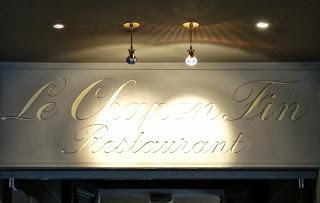 Welcome to the Le Chapon Fin, one of Bordeaux’s oldest restaurants and firmly established as an essential high-society meeting point in the heart of the affluent Triangle d’Or, the three sides of which are formed by Cours de l’Intendance, Cours Clémenceau and Allées de Tourny.
Welcome to the Le Chapon Fin, one of Bordeaux’s oldest restaurants and firmly established as an essential high-society meeting point in the heart of the affluent Triangle d’Or, the three sides of which are formed by Cours de l’Intendance, Cours Clémenceau and Allées de Tourny.The restaurant was founded in 1825 in the slipstream of the French Revolution. Convent land and buildings had been confiscated and within the space of a few years of hasty urban planning, housing, shops, theatres, a covered market and restaurants all mushroomed to serve the needs of the quarter’s wealthy trader residents.
Le Chapon Fin’s golden era began in 1843 when it was acquired by one Jean Riom, who strategically recruited a highly-talented chef to deliver top-class cuisine. The establishment’s reputation developed rapidly. Come 1886, new owner Louis Mendiondo teamed up with the renowned wine trader Arthur Dubois. The latter’s knowledge of fine wines further strengthened the restaurant’s dining credentials, which were once more to be enhanced by the 1896 arrival of the young Parisian chef Joseph Sicart.
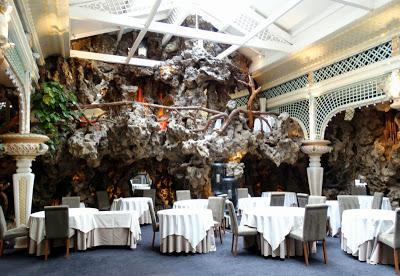 With Sicart on board, the restaurant’s clientele branched out beyond local high-society figures to include Parisians stopping over in Bordeaux en route to their vacations in fashionable Biarritz. They were drawn to the cuisine but also to the restaurant’s brand new décor, dreamt up by the architect Cyprien Alfred Duprat, who would go on to design the Maison cantonale de la Bastide and the original terminal of Mérignac airport.
With Sicart on board, the restaurant’s clientele branched out beyond local high-society figures to include Parisians stopping over in Bordeaux en route to their vacations in fashionable Biarritz. They were drawn to the cuisine but also to the restaurant’s brand new décor, dreamt up by the architect Cyprien Alfred Duprat, who would go on to design the Maison cantonale de la Bastide and the original terminal of Mérignac airport. The design he came up with combined numerous decorative plaster cast bas-reliefs, a fair amount of live greenery (photos from this period even show a tree trunk bang in the middle of the restaurant), and a substantial fake rockery feature. This kind of folly was commonplace at the time. Similar man-made rockery from that period, on an even grander scale, can be seen in Parc de Majolan in Blanquefort.
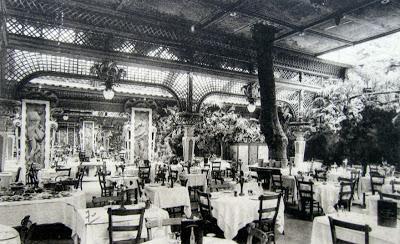
The restaurant as it was in the early years of the 20th century as featured
on postcard/wine menu picked up by Adam of Invisible Paris.
The restaurant also welcomed royalty. One regular was Britain’s Edward VII, the current Queen’s great-grandfather, who enjoyed much quality time in south-western France during his leisurely years as heir to the throne. Frequent traveler King Alfonso XIII of Spain (for whom this is also a repeat appearance on the blog) was another illustrious diner. He would always request the same table, to the right-hand side of the balcony area up in amongst the rockery. To date, the table remains the most desirable in the restaurant.
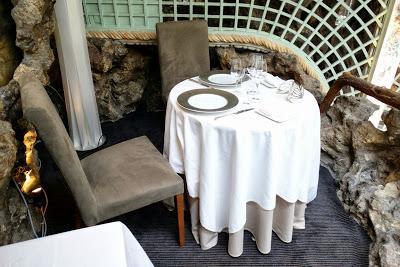
The King Alfonso XIII table.
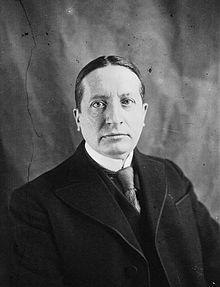
Georges Mandel,
source: Wikipedia.
But Mandel was soon freed and fled to Morocco with the intention of coordinating the fight against Nazism. However, in August of that year he was arrested and sentenced to life imprisonment. He was held at Fort du Portalet in the Pyrenees before being transferred to Oranienburg-Sachsenhausen concentration camp near Berlin, then to Buchenwald camp where political figures of occupied countries were detained. Mandel was later transferred to the Prison de la Santé in Paris before being handed over to the French militia, who executed him in Fontainebleau forest on July 7th 1944.
Back to Le Chapon Fin though, which continued to be synonymous with its chef Joseph Sicart until his retirement in 1960. Gastronomic high points included a six-year period in the 1930s when the restaurant boasted three Michelin stars. The subsequent years proved to be more difficult. At one time there was even talk of the restaurant closing and of a garage taking its place!

Looking around the restaurant, including name-checks for Edward VII and Sarah Bernhardt, and the hallmark of cement specialists H. Chassin... responsible for the rockery perhaps?
The restaurant began hitting its stride again in the early years of the 21st century, particularly after the 2003 arrival of chef Nicolas Frion. Le Chapon Fin is now the property of the prolific businesswoman and wine sector expert Sylvie Cazes and her children, while day-to-day operations are handled by director Brigitte Bugeaud.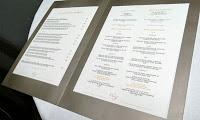
For my part, on this blog assignment I was among the crowds visiting the restaurant as part of a European heritage weekend open-day event… but I do aim to return as a paying customer and will do my best to reserve the Alfonso XIII table high up on the rockery feature!
- Find it: 5 Rue Montesquieu, Bordeaux
- Behind-the-scenes report including pictures of the kitchens and wine cellar on the most excellent Anne Lataillade's culinary blog Papilles & Pupilles, while the inimitable Bordeaux guide Yves Simone provides his account of the restaurant's history in this TV7 "Suivez Le Guide" report.
